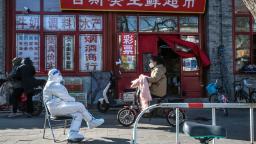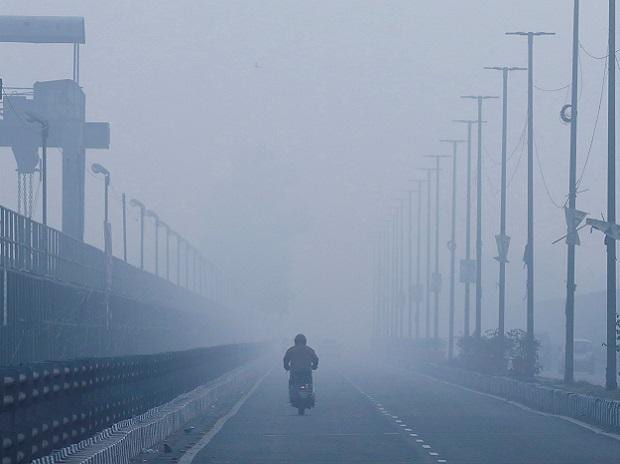
CNN
—
China announced sweeping changes to its national pandemic response on Wednesday, the clearest and most significant sign yet that the country is moving away from its strict zero-Covid approach.
In a statement reported by state broadcaster CCTV, China’s State Council unveiled 10 new guidelines that loosen some restrictions – most notably, allowing home quarantine and largely scrapping the health QR code that has been mandatory for entering most public places.
Local governments had already taken steps this week that indicated a possible change in direction – including some major cities loosening requirements on Covid testing.
But this is the first official change in Covid policy on a national level – a notable turnaround by the central government, which for the past three years insisted that the pandemic is a war only winnable by stamping out outbreaks wherever they occur, and controlling virus spread through unwavering restrictions.
Here are some of the biggest changes.
Since early in the pandemic, China has used health codes on mobile phones to track individuals’ health statuses. The color of these codes – in red, amber or green – decides whether users can leave their homes, use public transport and enter public places, or potentially need to quarantine.
Under the guidelines released Wednesday, people will be able to enter most places without showing a negative test result or their health code – a significant step after nearly three years of disruption to people’s daily routines and livelihoods.
Only a few exceptions will still require these checks, including nursing homes, medical institutions and secondary schools. Businesses can now determine their own prevention and control policies, the report added.
In another massive change, asymptomatic Covid patients or those with mild symptoms will be allowed to quarantine at home instead of being taken to a government facility, unless they choose otherwise.
Patients whose condition deteriorates will be transferred to hospital for treatment, the report said. Close contacts can also quarantine at home.
Throughout the pandemic, Chinese residents have described the chaos and stress of going into quarantine camps, many saying it was unclear when they would be allowed to leave, and others complaining of crowded or poor conditions.
In several cases, health workers reportedly killed the pets of those taken to government quarantine, citing health risks – triggering outrage on Chinese social media each time. Others criticized the policy after reports earlier this year of elderly residents being forced out of their homes in the middle of the night for transport to quarantine.
The new guidelines also urge authorities to “ensure the normal functioning of society and basic medical services,” saying areas that aren’t designated high-risk should not restrict people’s movements or close businesses.
Lockdowns are only allowed in “high-risk areas,” and even then, should be “promptly” lifted if no new cases are found for five consecutive days, it said. It added that authorities are forbidden from blocking fire escapes, apartment or building entrances, and other gates, so residents can still evacuate and seek medical attention if needed.
This particular guideline comes at a particularly sensitive time, with China still reeling from a wave of rare public protest in late November and early December, that had been triggered by a deadly fire in the far western Xinjiang region. Public fury had swept the nation after videos of the incident appeared to show lockdown measures had delayed firefighters from reaching the victims.
During the protests, thousands across the country took to the streets to call for an end to lockdowns and other zero-Covid measures – with some voicing broader grievances against censorship and the ruling Communist Party’s authoritarian leadership.
The State Council on Wednesday also emphasized the need to accelerate Covid vaccination among the elderly, saying all locations should be “administrating as many vaccinations as possible.”
While the Omicron variant is milder than previous strains and China’s overall vaccination rate is high, experts say even a small number of severe cases among vulnerable and under-vaccinated groups like the elderly could overwhelm hospitals if infections spike across the country of 1.4 billion.
More than 86% of China’s population over 60 are fully vaccinated, according to China’s National Health Commission. That leaves around 25 million who have not received any shot, according to a comparison of official population figures and November 28 vaccination data. But booster rates are lower, with more than 45 million of the fully vaccinated elderly yet to receive an additional shot.
For the most at-risk over 80 age group, around two-thirds were fully vaccinated, but only 40% had received booster shots as of November 11, according to state media.
The rules also make domestic travel within China easier, with cross-regional travelers no longer needing to provide a negative test result or their health code – or test upon arrival.
These former requirements, as well as other travel restrictions such as provincial border closures and provincial train and bus suspensions, have made domestic travel difficult over the last few years.
For the many in China who left their hometowns to find work in other cities and provinces, that meant being separated from family for long stretches – or being stranded far from home without an income during snap lockdowns.
In recent days, some social media users have pointed out that Lunar New Year is just a month away – the country’s biggest annual holiday, a time when people typically travel home to gather with family, akin to the American Thanksgiving.
For some, the prospect of mass nationwide travel has raised concern of the virus spreading once more. Others, long fatigued with the toll of zero-Covid, greeted the news with relief.
“I haven’t been home for Chinese New Year for two years now, I’m crying,” one person said on Weibo. Another wrote: “It’s been a long time. Welcome home.”
Note:- (Not all news on the site expresses the point of view of the site, but we transmit this news automatically and translate it through programmatic technology on the site and not from a human editor. The content is auto-generated from a syndicated feed.))




Hello There. I found your blog using msn. This is a really well written article.
I will make sure to bookmark it and return to read more of your
useful info. Thanks for the post. I’ll certainly return.